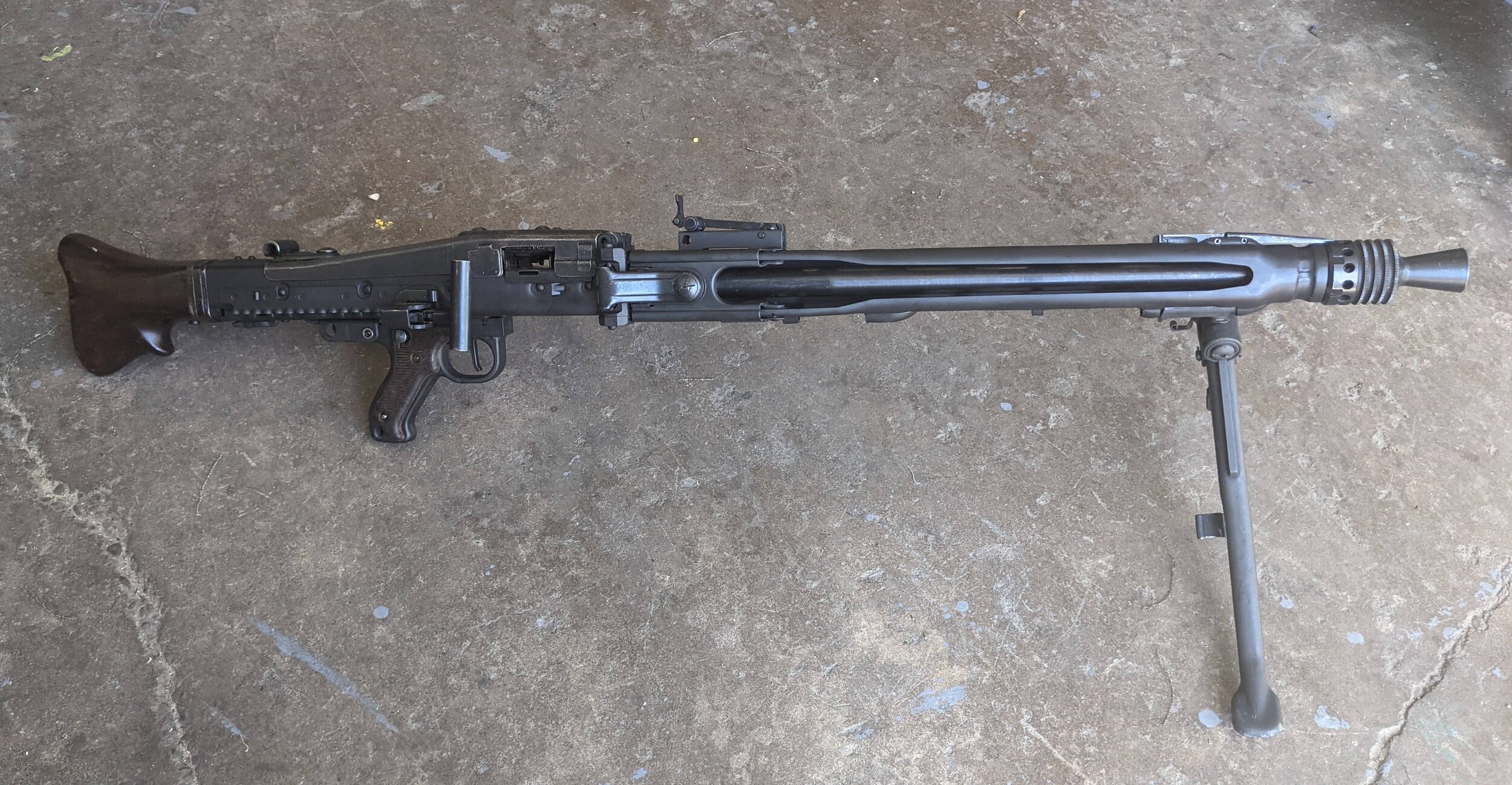Feat of the Week: MG 42 Build
The Gunsmithing Story
This week’s gunsmithing feat is building an MG 42. This customer brought us a parts kit with mostly German parts and some Yugoslavian parts. We converted it to semi-automatic by welding on a conversion to the trigger group which makes the original full-auto grip stick accept an AR trigger. By doing that, we didn’t have to make a new trigger group.
Then, we made a steel block and welded into the receiver to prevent anyone from installing a full-auto bolt carrier. We also modified the bolt to accept a firing pin that can go all the way through it. This allows the hammer to hit the firing pin in semi-automatic mode. In the MG 42’s original configuration, the firing pins were really short and dropped into place when the gun went into roller lock during automatic fire.
Next, we riveted in the rails and checked the headspace. We fit the rest of the parts to match the semi-automatic configuration. We also tuned the gun’s gas system and the action so it cycled properly.
Finally, we Cerakoted it black and engraved the receiver (because we technically manufactured/produced the gun).
I have some MG 42 kits of my own. I bought my first two before I had applied to gunsmithing school, and since then, I’ve acquired two more. Unfortunately, I’m so busy working on other people’s guns that I only have one complete MG.
I wouldn’t say they are the best machine guns ever built, but they are one of the foundational designs for almost all modern machine guns.
MG 42 History
The MG 42 is the most notorious machine gun from World War II. Known as Hitler’s Buzzsaw, this machine gun emitted a sound which inspired fear in the most courageous Allied soldiers. Capable of firing 1,200 rounds per minute, it fired at a rate double that of the American’s M1919.
During World War II, three companies were asked to submit designs to replace German’s MG 34 machine gun. The best design was air-cooled, recoil-operated, and incorporated a firing system which used a roller locking mechanism. Earning the name MG 42, this design entered into production in 1942.
It took half as much time to produce, almost half as many raw materials, and was a fourth of the cost of the MG 34. It was also more reliable, durable, lighter, and could fire more rapidly (the MG 34 fires 850 rounds per minute).
While the high rate of fire was incredibly effective for suppressive fire and anti-aircraft purposes, the MG 42 was quick to run out of ammunition and its barrels often overheated quickly. Continuous and sustained fire, therefore, was often avoided by the Germans. Burst fire was considered to be most effective. Thus, even though it was capable of 1,200 rounds per minute, the most effective rate was just over 150. And, though it was significantly better than the MG 34, it wasn’t select fire.
In order to overcome quickly burning through ammunition and overheated barrels, the German army reorganized around this killing machine. Each member of the unit carried ammunition. Though a barrel change only took up to twenty seconds, it needed to be changed every 250 rounds. Effective German squads could shoot 250 rounds in bursts in under thirty seconds.
Because the weapon was so effective, the Germans focused their war strategy around the MG 42. The center of the German army was the machine gun. They used their infantry to support their machine gun units—unlike the Allied forces who used machine guns to support the infantry. For example, in a group of 150 infantry men, the Germans deployed fifteen machine guns while the Americans only used two.
The infantry’s job was to support its movement and cover the operators while they got to the new location. On defense, the Germans also relied on the movement of the MG 42. For instance, they moved the MG 42 to various positions in order to confuse Allied troops. This tactic was called Stelungswechsel which means “change of position.” Using this strategy, one MG 42 could create the illusion of a whole squadron of machine guns.
Ultimately, the incredible rate of fire of the MG 42 wasn’t enough to overcome the Allied forces on the beaches nor the Russians in the East. It's roller locking design, however, did live on in the CETME rifle and the MP5.
Next Up
We hope you enjoyed this week’s gunsmithing feat. Thank you for following along! We publish new blog posts every Tuesday morning at 10am PST. Comment for any content you want to see.
If you loved the services you saw today, check out our online store! You can start shopping by clicking here. Or drop us a message here. And don’t forget to follow us on social media! We look forward to meeting you and gunsmithing for you




